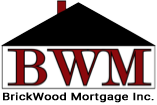The decision to choose between a fixed-rate mortgage and an adjustable-rate mortgage (ARM) is one of the most critical choices you’ll make when purchasing a home. The option you select will significantly impact your monthly payments and the overall cost of your home. In this blog, we’ll discuss how mortgage calculators, particularly for those in areas like Loris, SC, and North Myrtle Beach, SC, can help you make an informed decision when comparing fixed and adjustable-rate mortgages.

Understanding Fixed and Adjustable-Rate Mortgages:
Before we delve into the role of mortgage calculators, let’s clarify the key differences between fixed-rate mortgages and adjustable-rate mortgages:
Fixed-Rate Mortgage:
Stable Payments: With a fixed-rate mortgage, your interest rate remains constant throughout the life of the loan. This implies that your monthly principal and interest payments will remain the same.
Predictable Budgeting: Fixed-rate mortgages are known for providing predictability and stability in your monthly housing costs; this predictability can be essential for budgeting.
Long-Term Planning: Fixed-rate mortgages are well-suited for homeowners who plan to stay in their homes for an extended period. Interest rate changes will have no effect on you.
Adjustable-Rate Mortgage (ARM):
Initial Rate Period: ARMs typically begin with a fixed interest rate for a specified period, often five, seven, or ten years.
Rate Adjustments: After the initial period, the interest rate may adjust periodically based on a specific index. This can result in lower initial payments, but potentially higher payments in the future.
Shorter-Term Planning: ARMs can be suitable for homeowners who plan to move or refinance before the initial fixed-rate period ends. They might profit from reduced starting interest rates.
How Mortgage Calculators Help You Choose:
Mortgage calculators are indispensable tools when comparing fixed and adjustable-rate mortgages. Here’s how they can assist you:
- Payment Comparisons:
Mortgage calculators allow you to input the loan amount, interest rate, and term. By doing this for both fixed-rate and ARM options, you can compare the monthly payments. This side-by-side comparison is crucial for understanding the immediate financial impact of each mortgage type.
- Sensitivity Analysis:
Some mortgage calculators have built-in sensitivity analysis tools. They can illustrate how changes in interest rates might affect your ARM’s monthly payments. This feature provides valuable insights into potential future payment adjustments.
- Long-Term Cost Analysis:
Mortgage calculators can provide you with a breakdown of the total cost of the loan over its lifetime. This includes the principal and interest paid. You can use this information to compare the overall cost of a fixed-rate mortgage to that of an ARM.
- Affordability Assessment:
By entering your income, expenses, and potential changes in interest rates, mortgage calculators can help assess your ability to handle increased ARM payments in the future. This is particularly valuable for homeowners considering ARMs.
- Breakeven Analysis:
For ARMs, mortgage calculators can calculate the breakeven point, indicating when the ARM’s total interest costs would surpass those of a fixed-rate mortgage. This analysis helps you understand how long you need to stay in your home for an ARM to remain cost-effective.
Choosing between a fixed-rate mortgage and an adjustable-rate mortgage is a significant financial decision. Mortgage calculators, especially when tailored to locations like Loris, SC, and North Myrtle Beach, SC, provide a clear and data-driven way to compare your options. They allow you to assess monthly payments, long-term costs, and potential future scenarios. When using these valuable tools, you can make a well-informed decision that aligns with your financial goals and homeownership plans. Before making your choice, consider consulting with a local mortgage expert who can provide guidance specific to your area and financial situation.
Choosing Between Fixed and Adjustable-Rate Mortgages
Deciding between a fixed or adjustable-rate mortgage? BrickWood Mortgage, Inc. is here to guide you toward the great choice for your needs. Call us today at (843) 314-4101 for personalized mortgage advice!
